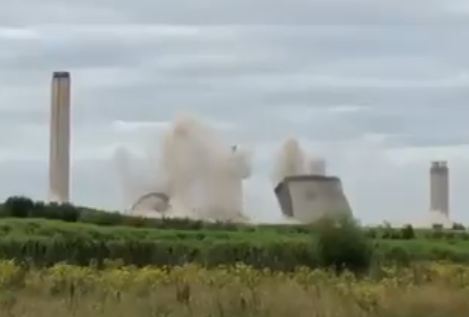 Didcot power station with all six of its cooling towers. Credit: David Price
Didcot power station with all six of its cooling towers. Credit: David Price
The last cooling towers of Didcot A power station in Oxfordshire were demolished on 18 August, six years after the station was decommissioned. The detonation was conducted by demolition contractor Brown and Mason.
However, the demolition did not go smoothly as it caused the explosion of a nearby pylon and transformer station, causing power outages for over 40,000 people in the area.
Scottish and Southern Electricity Networks (SSEN), whose customers were affected by the explosion, explained: “During the demolition, a large section of debris protection material became detached from one of the cooling towers and made contact with our 33kV overhead line, which was outside of the advised perimeter. This resulted in significant damage to the overhead line and subsequent network faults.
“SSEN takes its responsibility to public safety seriously. We are aware of reports of minor injuries and damage caused by the incident at Sutton Courtenay and are working with the police and other agencies to identify those impacted.”
Didcot demolition reaction
Much of the reaction to Didcot was on the appearance of the cooling towers, with Tom Jennings tweeting: “It is of course right and proper that we move away from coal as a power source, but a small part of me will kind of miss the iconic old girls, visible even from my end of the Chilterns on a clear day, almost 40 miles away.”
Conservative journalist Peter Hitchens condemned the demolition, writing: “The destruction of the remaining cooling towers of Didcot ‘A’ power station is a gloomy symbol of the crazy destruction of coal-fired generation, and presages more power cuts. Didcot, built in the 1960s, was still perfectly sound. Destroyed by dogma.”
Didcot power station: A brief history
Didcot power station was commissioned in 1968 as a coal-fired power plant with a capacity of 1,440MW.
Having been privatised in 1990, the plant was owned by National Power, Innogy and RWE Npower during the remainder of its tenure. Decommissioned in 2013, the plant was refused listed status by Historic England in the same year, and the first three of the six towers were demolished in July 2014.
The station was the scene of a fatal accident in February 2016, when in preparation for the controlled demolition a boiler house collapsed unexpectedly, killing four workers.